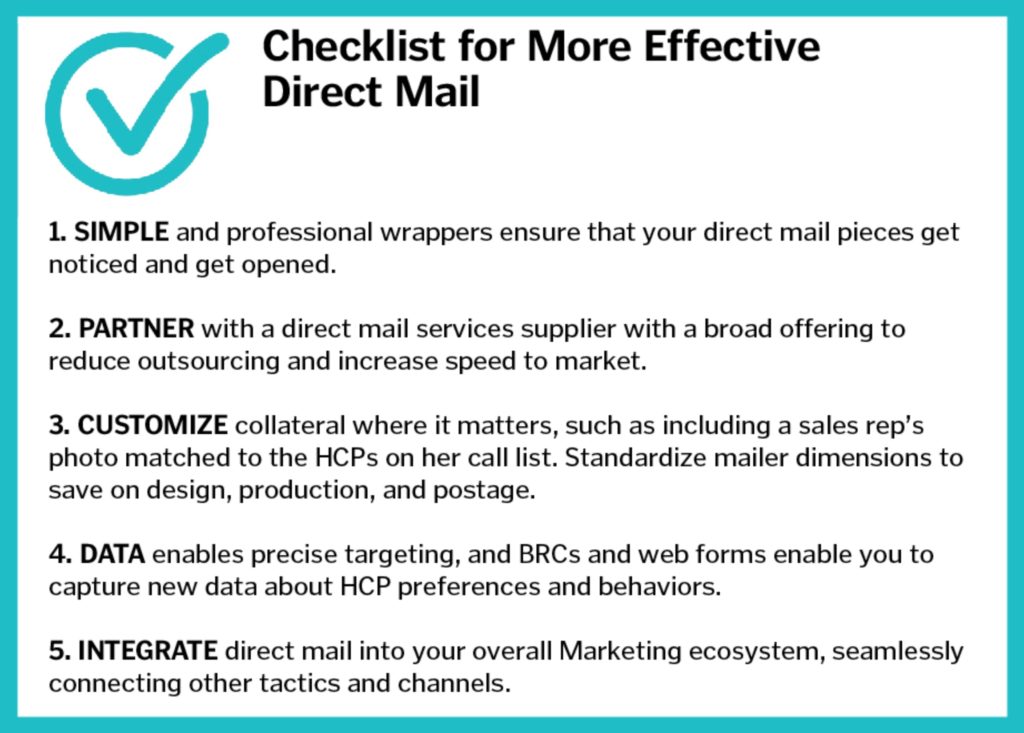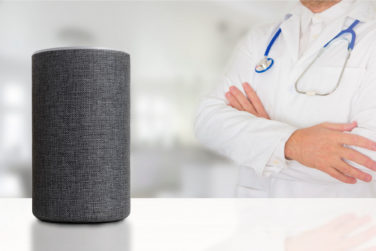In an age in which everything is digital, direct mail (DM) may seem to belong in a museum of quaint things direct marketers once used. However, an experienced and broadly skilled marketer today knows the facts about DM, which are surprisingly impressive. According to the Direct Marketing Association (DMA), DM customer response rates increased by an unheard of 43% from 2016 to 2017. For that same period, prospect response rates to DM increased by an eye-popping 190%! It makes sense: DM is now a channel with low message clutter and noise, so those who use it have a greater ability to stand out and get noticed.
The simple truth is that outdoor advertising has become wallpaper, email inboxes are increasingly cluttered with spam and other messages, and social media platforms continue to proliferate, mutate, and consume more of our time. So a message that arrives in a special wrapper, that sits patiently and prominently on our desks, and that we can hold in our hands and annotate using just a pen, is becoming a “new” way to grab the attention of HCP customers and prospects of all ages. Here are a few tips to take best advantage of DM, based on our experience at MNG Health.
 First Impressions Matter
First Impressions Matter
One of the reasons DM fell out of favor for some marketers was an over-reliance on the use of glossy circulars and collateral with “in your face” advertising. That’s not the best way to reach an audience of busy professionals. Instead, we recommend that our clients use a plain, #10 envelope as the wrapper for many of their DM pieces. In healthcare, it’s often a good idea to have the envelope appear non-descript, without overt branding or messaging. It’s fine to include your company’s logo on the envelope, and a well-designed, tasteful teaser. Keeping things simple and professional will increase your open rates more than approaching the design like a used car salesman.
KISS the Content
For the letter itself, keep it simple. We recommend using a single sheet of letter-sized paper instead of custom sizes, heavy card stocks and complex die cuts that increase costs of design, production, and distribution. If your message requires a second page, it’s better to use the back of the sheet rather than leave the back blank and add a second page—it makes the message seem more concise and easier to read.
We also recommend putting the call to action (CTA) in the front, top half of the letter—most readers like to know immediately what’s being asked of them. This is especially true if you include a Business Reply Card (BRC), which we’ll look at next.
Enable Easy, Fast Responses
If you’re communicating directly to an audience, you want them to do something, right? More often than not, the desired response is a “next step,” such as ordering samples, requesting more information, or scheduling an in-person conversation. Given that this individual received this message via DM, why not use this same channel for her response?
A physical BRC gives the reader an easy way to reply back to you, and it gives you a validated way to understand precisely who is responding to your message. You can reduce problems caused by unreadable handwriting and incomplete information by preprinting a recipient’s contact information onto the BRC, or by offering digital response mechanisms such as web forms.
Align Home Office and Field Teams
In life sciences, DM is used by a variety of home office functions including brand teams, patient access and medical affairs, and by field sales and medical science liaisons (MSLs). Each of these groups can connect with HCPs using DM designed for their particular needs, and each piece can be customized to meet the specific requirements of the moment.
For example, a brand team can send a series of DM pieces announcing the availability of a new product or formulation, while an access group may want to communicate a new formulary win. Sales representatives and MSLs can easily follow up after an HCP visit using pre-approved letter templates on their phones or tablets. It’s important to select a DM partner that can handle these many needs and ensure that the overall communications effort of the brand or company has a consistent look and feel that drives engagement and results.
Mass Mailing, not Mass Market
We know how hard it is to create truly personalized messages due to drug promotional regulations. Yet a leading-edge DM supplier can help your messages stand out through dynamically printed customizations, such as a photo of your sales representative printed on collateral that varies based on unique factors for an individual HCP. We often advise our clients to have up to 10 different letter templates for a campaign, because variety also helps create optimal results.
DM is of course only one part of a larger communications program, so consider working with a supplier that can handle your DM needs as well as your email, event-based, and other channels. Having a supplier who knows the messaging preferences of your target audience can allow you to match your message and channel to the preferences of individual HCPs, which drives greater results.








